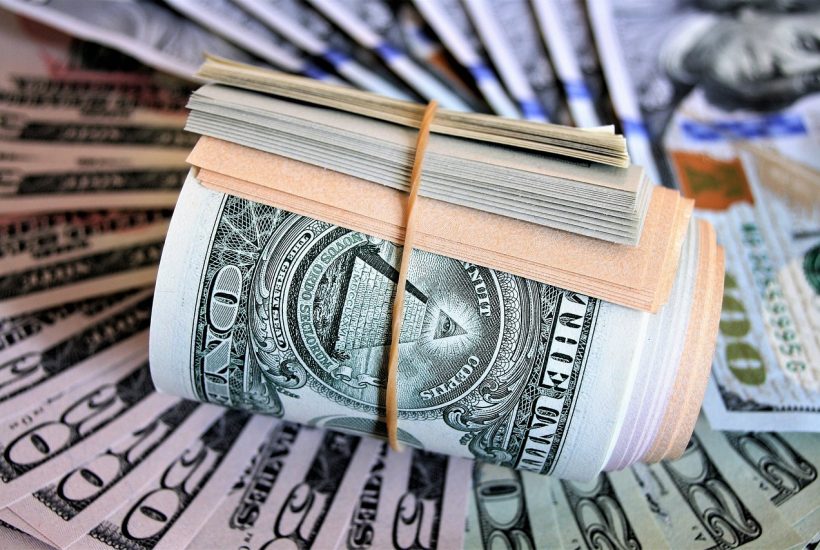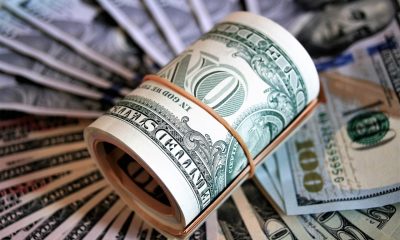Business
Four Reasons Why the January Rally Will Falter
The bottom line is that the US economy should be in recession by the second half of 2023. To re-emphasize why the soft-landing is a myth, China will be fully reopened in Q1, and they cannot reopen twice; the Treasury General Account at the Fed will need to be replenished, and that will exacerbate the $95 trillion per month QT program at the Fed.

Inflation is supposedly on its way to falling gently back to 2% like a fluffy snowflake while the US economy roars ahead. Or at least that is what the deep state of Wall Street needs you to think.
However, the US economy is in the eye of the hurricane right now; and the other outer eye wall is approaching as the storm is intensifying. Hence, the following are the four reasons why the January rally will fail.
The soft-landing myth, which will have the Fed cutting rates in the context of a healthy economy, will be busted
That is fiction without any basis in logic. The conditions necessary for a change to a looser monetary policy would not be extant given the current record-low unemployment rate and growing GDP. We would need to see inflation plunge towards the 2% range, but that would likely only occur if the labor market was faltering along with EPS and GDP. To this point, GDP increased at a 2.9% SAAR in Q4, the unemployment rate fell to 3.4%, while the ROC of inflation slowed from 9.1% in June of last year to 6.5% by December.
Hence, there exists the current hope that inflation will slow to 2% while growth remains strong. However, the road from 6% inflation to 2%, or even 3%, will be much more difficult given the stickiness of wage inflation, which is currently up 5% y/y. And, OER will not be falling nearly as quickly as goods sector inflation. The reality is that real GDP increased by just 0.8% for all of last year. That is, if you believe CPI increased by only 6.5%. So, in truth, the economy is not all that strong right now in real terms—after you factor out inflation. But Powell is still convinced that GDP is strong.
China reopened a few months earlier than predicted, and that led to a flurry of enthusiasm about the communist nation pulling economic growth out of the ditch
China did indeed pull the global economy out of crisis during the Great Recession. It did this by increasing debt from 143% of GDP in 2006 to over 300% today. But in the process of taking on the greatest expansion of debt in history, China created a massive misallocation of capital and a humungous fixed asset bubble.
China’s economy is now so unstable that it cannot undergo anything close to the same process that boosted global growth 14 years ago. The PBOC injected the equivalent of $581 billion over the past two months in preparation for their reopening. Clearly, that pace of stimulus cannot continue without creating runaway inflation and a Yuan currency crisis, let alone rescuing the global economy yet again. Most importantly, China can only reopen once. Therefore, the growth impulse will peter out over the course of the next few months.
The Treasury Department is offsetting QT by emptying the Treasury General Account at the Fed
The Treasury parks money at the Fed. Sort of like banks park excess reserves. This money lays fallow and is out of the economy, but can be drawn on by the Treasury during times of emergencies–like now, due to the US hitting the debt ceiling.
Secretary Yellen cannot issue new debt, only rollover expiring debt. Therefore, she is tapping the TGA, which is adding new money into the economy—a type of QE that is for now, offsetting the Fed’s QT program. But the TGA will be tapped out come June. So, this boost to the money supply is short-lived.
Tax loss selling at the end of ’22 caused those erstwhile sellers to pile back in after the 30-day wash-sale rule expired
The beaten-down, profitless tech sector lost 70% of its value last year. Investors realized those losses in December and then had to wait 30 days to lock in those write-offs. By the way, stock down 70% needs to increase by 233% just to break even.
So, who cares if these stocks are up 30%? In any event, that caused a cascade of buy volume into this sector throughout the month of January. But that rush back into losing bets is over and done now, and these profitless tech investors get to now witness their companies go out of business because they cannot afford to service new debt at the much-higher interest rates.
All of this is why last week’s short covering rally was one of the most significant on record.
So, what is the setup now? The bottom line is that the US economy should be in recession by the second half of 2023
This flips upside down the widely held belief that the 1st half of this year would be weak, but the second half would see a strong rebound in stocks and GDP. To re-emphasize why the soft-landing b.s. is a myth, China will be fully reopened in Q1, and they cannot reopen twice; the Treasury General Account at the Fed will need to be replenished, and that will exacerbate the $95 trillion per month QT program at the Fed. Come June, it will be QT on steroids. We will then be left to endure the lagged effects of the most coordinated global tightening of monetary policy in history that took place over the past year, which has yet to fully economic growth and EPS but should absolutely do so by the end of Q2.
The yield curve continues to sink further into inversion. It is now the most inverted since 1981, which presages not just an ordinary recession but one that is extremely trenchant. The cost of capital for Zombie corporations and consumers has surged over the past year. This will cause massive layoffs from the 20% of listed companies that need to issue new debt just to pay interest on existing obligations. The plethora of hiring freezes and layoffs announced over the past couple of months will begin to greatly inhibit consumption. And, the battered US consumer, 2/3rds of whom are living paycheck to paycheck and have less than $400 in savings, should begin to shut down consumption. The economy will also be struggling through a Fed Funds Rate that is stuck above 5% for a long time. Most importantly, the great cascade of the base money supply and Fed credit should cause bank lending to begin to seize up and cause chaos in credit markets. The coming recession will push the current mild decline in EPS into a significant plunge.
Of course, this will eventually lead to a genuine Fed pivot, but it will come in response to an equity market crash and credit market freeze…not ahead of one. Unfortunately, this means Powell will pivot before inflation has been dead and buried, which in turn means the next inflationary cycle will dwarf the previous 40-year-high battle fought in 2022-23. Alas, for those 60/40 buy-and-hold investors, these inflation/deflation boom and bust cycles will grow more intense and more destructive over time. But for those fortunate to have a robust macroeconomic model, it provides opportunities to outperform the market.
__
(Featured image by pasja1000 via Pixabay)
DISCLAIMER: This article was written by a third party contributor and does not reflect the opinion of Born2Invest, its management, staff or its associates. Please review our disclaimer for more information.
This article may include forward-looking statements. These forward-looking statements generally are identified by the words “believe,” “project,” “estimate,” “become,” “plan,” “will,” and similar expressions. These forward-looking statements involve known and unknown risks as well as uncertainties, including those discussed in the following cautionary statements and elsewhere in this article and on this site. Although the Company may believe that its expectations are based on reasonable assumptions, the actual results that the Company may achieve may differ materially from any forward-looking statements, which reflect the opinions of the management of the Company only as of the date hereof. Additionally, please make sure to read these important disclosures.

-

 Biotech2 weeks ago
Biotech2 weeks agoEFPIA Calls for Clearer AI Governance to Safely Transform Drug Development
-

 Africa1 day ago
Africa1 day agoBantuHub and L’Archer Group Partner to Invest €1 Million in Congolese Startups
-

 Markets1 week ago
Markets1 week ago2025 Chaos, Concentration, and the Road to 2026
-

 Biotech5 days ago
Biotech5 days agoAsebio Welcomes the EU Biotech Act as a Boost to Competitiveness and Health Autonomy

























